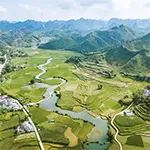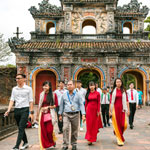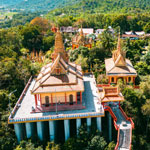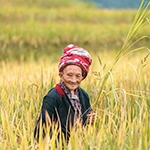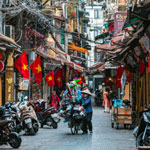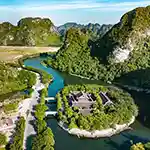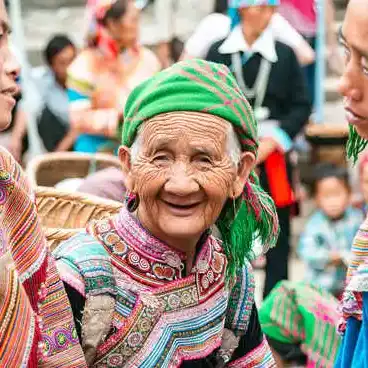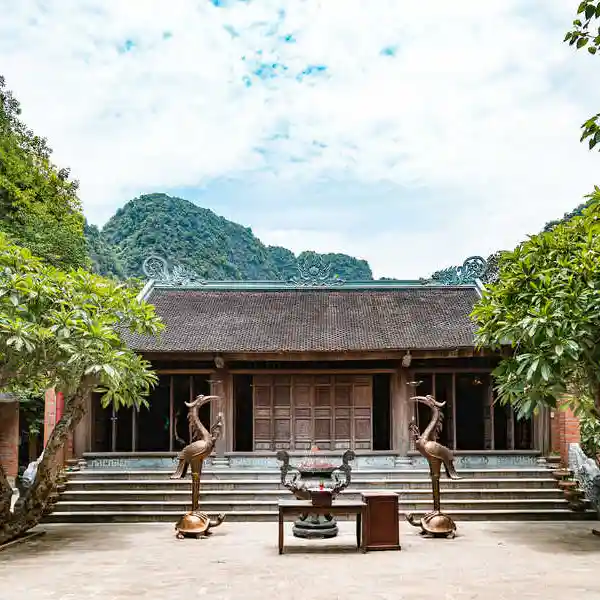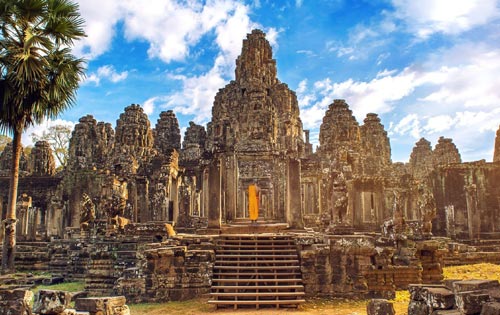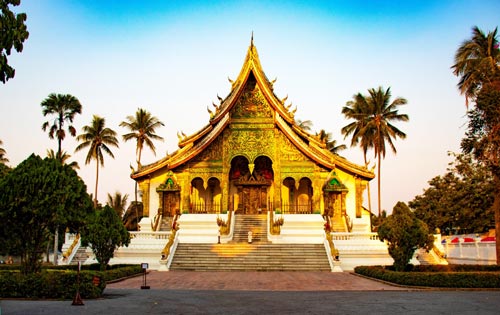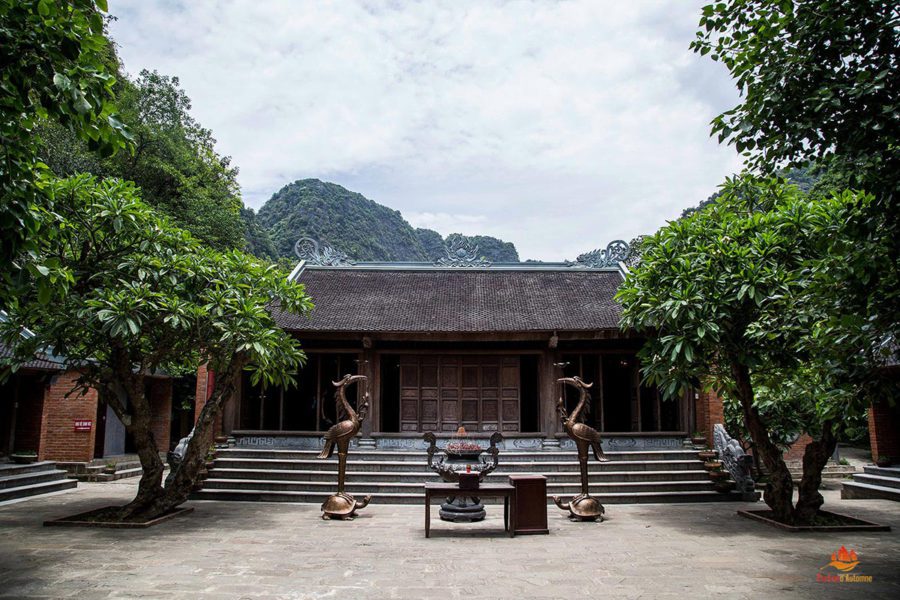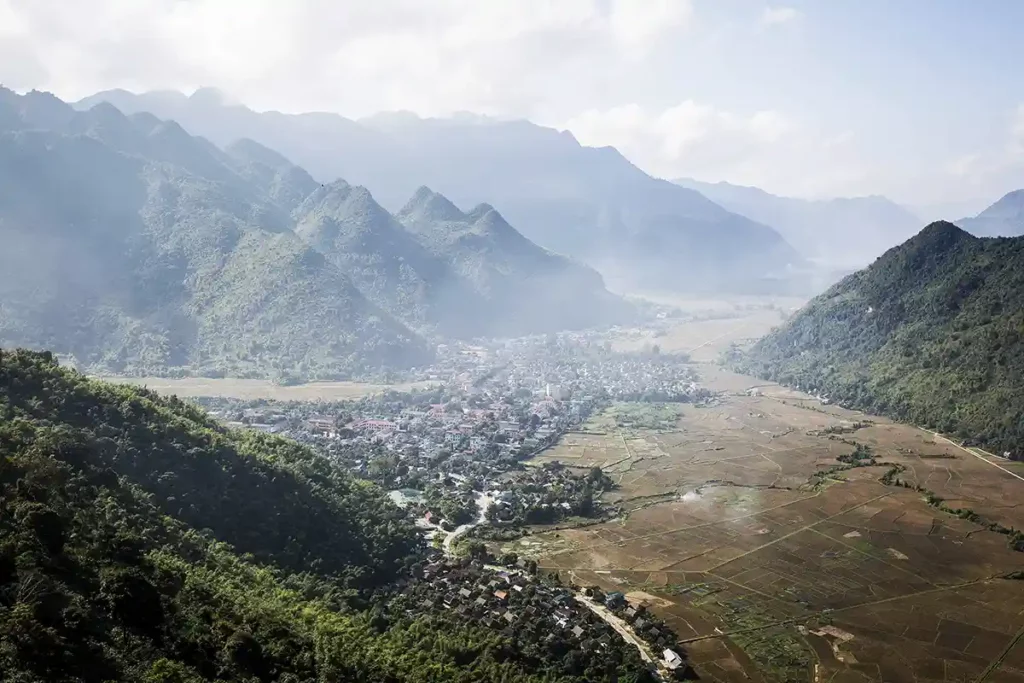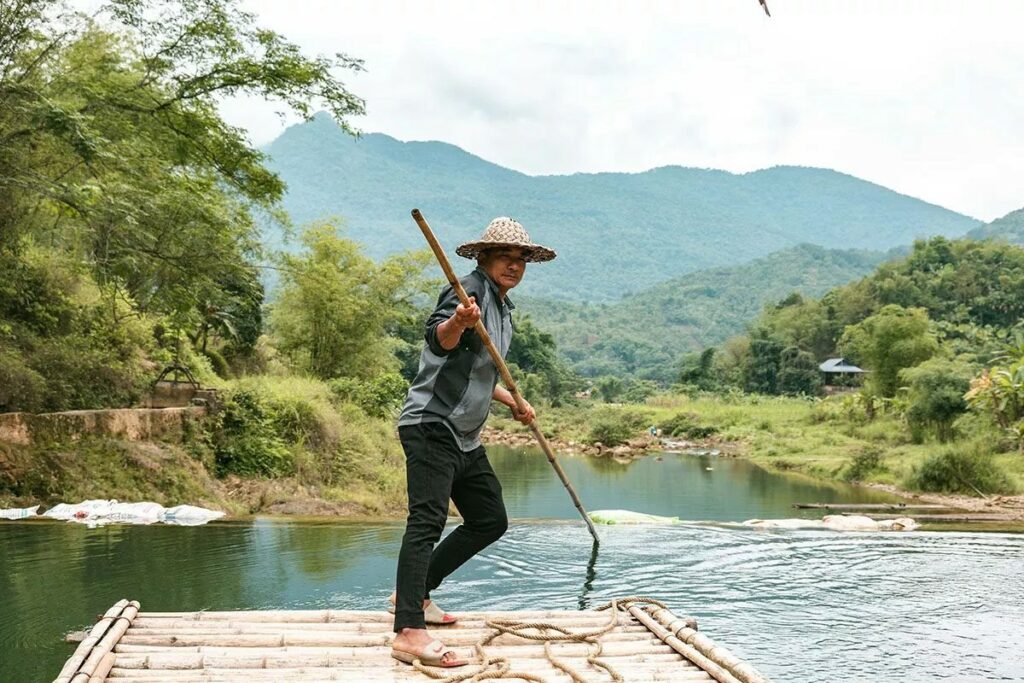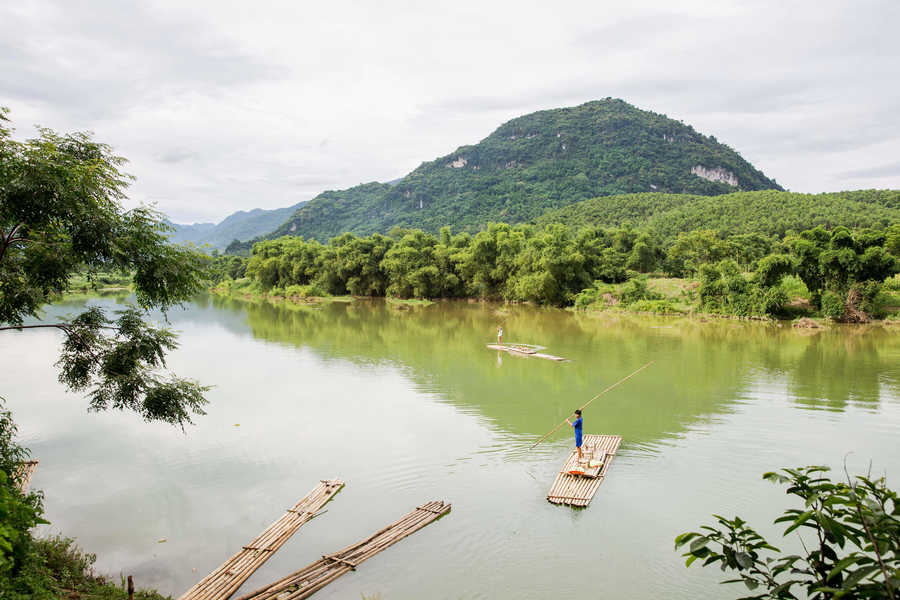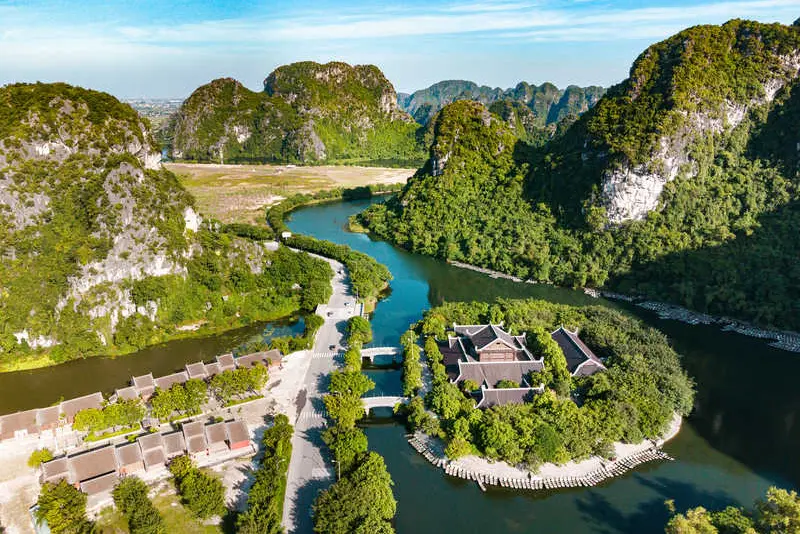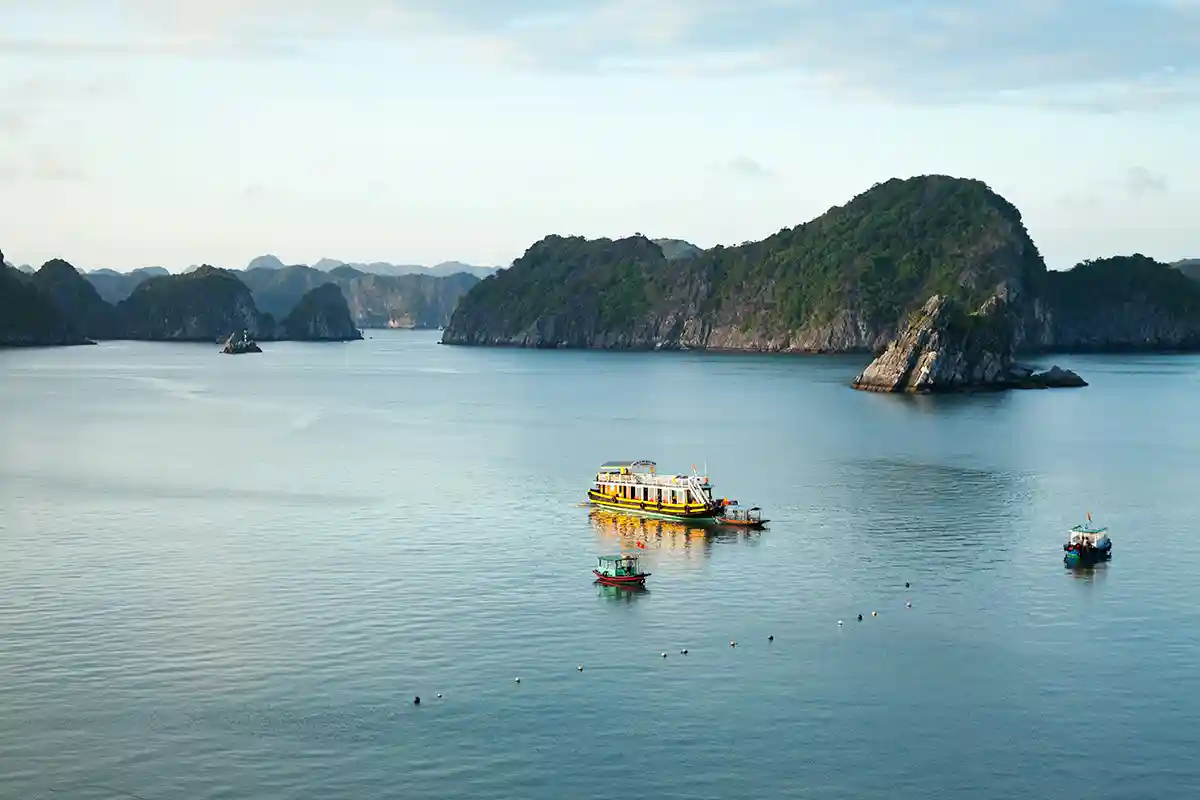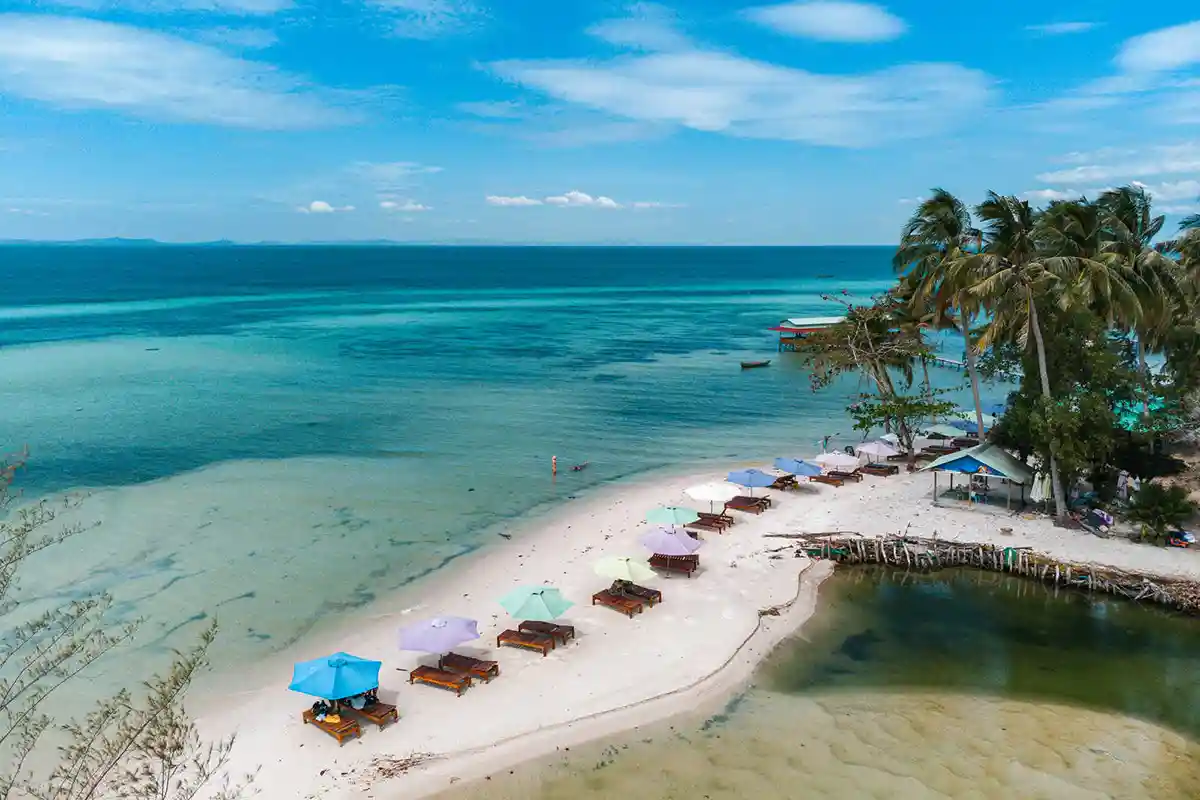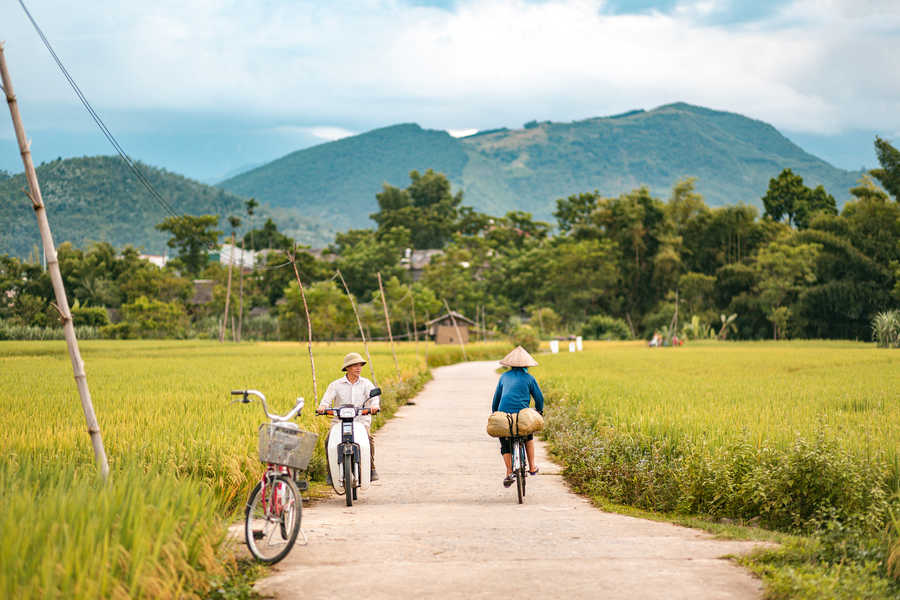Vietnam has many temples and pagodas, which reflect the strong presence of spirituality in the daily lives of its people.
During your trip, you will certainly have the opportunity to visit some of these cultural monuments.
The first question you might ask yourself is: what is the difference between a temple and a pagoda? The explanations below will help you gain a deeper understanding of Vietnam’s cultural history and the beliefs of its inhabitants.
In this article, we’ll shed some light on this topic before your local guides tell you more…
Feel free to contact us to organize your cultural tour in Vietnam.
What is a pagoda?
A pagoda, called “chùa” in Vietnamese, is a place of worship dedicated to Buddha. The form of Buddhism practiced in northern Vietnam is inspired by the Chinese tradition of the “Great Vehicle,” or Mahayana.
Monks who live in monasteries near certain pagodas (though not all) follow the teachings of the Great Vehicle and take care of the premises. They are unmarried and follow a strict vegetarian diet.
Practicing Vietnamese Buddhists—about 5 million people according to the 2019 census—regularly visit pagodas and sometimes go on retreats to receive teachings from monks. Traditionally, most Vietnamese visit pagodas to pray to Buddha on festival days, as well as on the 1st and 15th days of the lunar months.
Inside the main sanctuary of pagodas, you will find numerous Buddha statues placed on the altars. In the front row are the three “Tam Thế” Buddhas, representing the Past, Present, and Future. Behind them stand the statues of Amitabha, Cakyamuni (the “historical Buddha”), and Bodhisattva Di Lạc (Maitreya, also known as the “Future Buddha”), who is believed to be the successor of Cakyamuni. On both sides are statues of various Bodhisattvas.
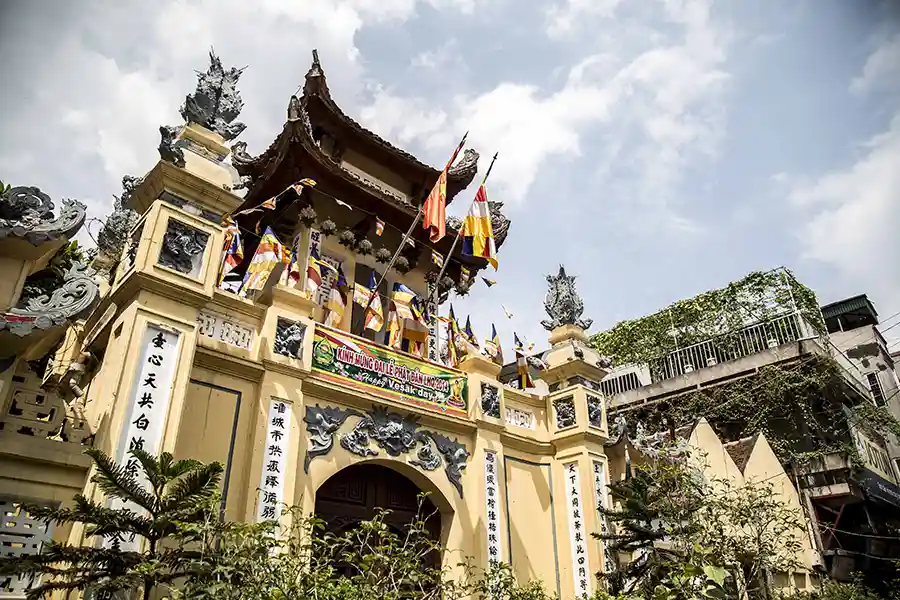
Architecture of a pagoda in Hanoi. Photo credit: Mathieu Arnaudet
The oldest Buddhist pagoda in northern Vietnam is the Dau Pagoda, located about 30 km from Hanoi, in Bac Ninh Province. Built in 187 CE, it stood at the center of the ancient Luy Lau Citadel. Other historical (though renovated) pagodas are also worth visiting, such as But Thap Pagoda (“Brush Tower Pagoda”) in Bac Ninh Province, Tran Quoc Pagoda in Hanoi, Tay Phuong Pagoda, Thay Pagoda, and the Jade Pagoda in Tam Coc (Ninh Binh).
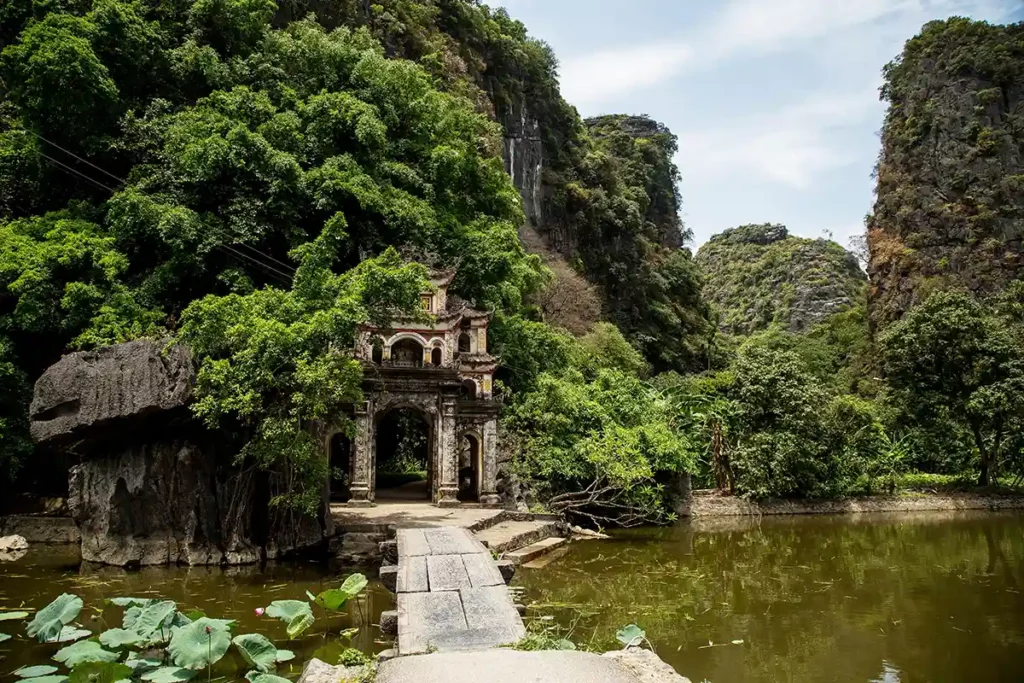
Entrance to the Jade Pagoda in Tam Coc. Photo credit: Mathieu Arnaudet / Parfum d’Automne
>> Discover the most beautiful sites to visit around Hanoi.
Buddhism in Vietnam is not uniform throughout the country. For example, the Khmer communities in the Mekong Delta (especially in Tra Vinh and Soc Trang provinces) practice Theravada Buddhism, also called the “Small Vehicle.” This tradition, which emphasizes personal enlightenment, is considered more austere and elitist than Mahayana Buddhism. These differences are also visible in pagoda architecture.
If you do not plan to visit Cambodia or Thailand, you can still get a good impression of this architectural style by visiting the Doi (“Bat”) Pagoda in Soc Trang Province. This pagoda is considered an emblem of Khmer southern architecture and culture.
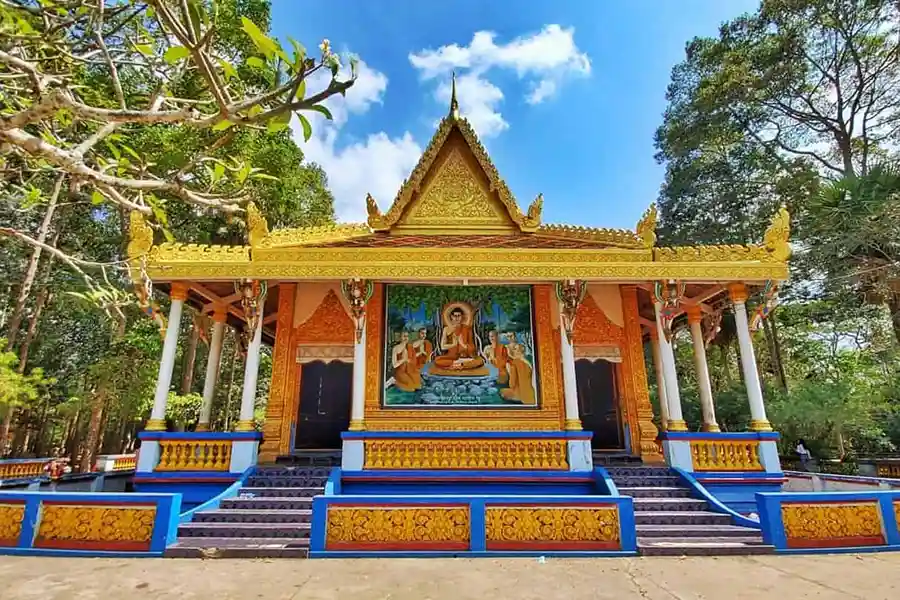
The Doi (“Bat”) Pagoda
What is a temple?
A temple, called Đền in Vietnamese, is generally dedicated to a national hero, a saint, a deity, or a spirit who has worked for the good of the community—whether a village or the entire nation.
There are no Buddha statues in temples, nor are there any monks—only a caretaker who looks after and maintains the place. This caretaker is chosen each year from among the village elders. Being selected is considered a great honor, as it is believed to bring good fortune to the entire family.
While visiting villages in Vietnam, you will certainly have the opportunity to enter several temples. These are often dedicated to a guardian spirit, a mythical or legendary figure who, according to local tales, appeared to protect the community. Examples include Quan Thanh Temple and Bach Ma Temple in Hanoi. Temples can also be dedicated to historical figures who have rendered great services to their community or to the nation. Many temples, for instance, honor General Tran Hung Dao (Tran Temple in Nam Dinh), King Le Loi (Dinh Tien Hoang Temple), or King Quang Trung (Le Hoan Temple in Hoa Lu).
The Temple of Literature (Van Mieu) in Hanoi is a special case. Originally founded in 1076 as a Confucian university that trained the nation’s future scholars and mandarins, it later became a temple dedicated to Confucius. Even today, students visit the site to pray for success before exams and university entrance tests. Each year, ceremonies are held there to honor top graduates from across the country.
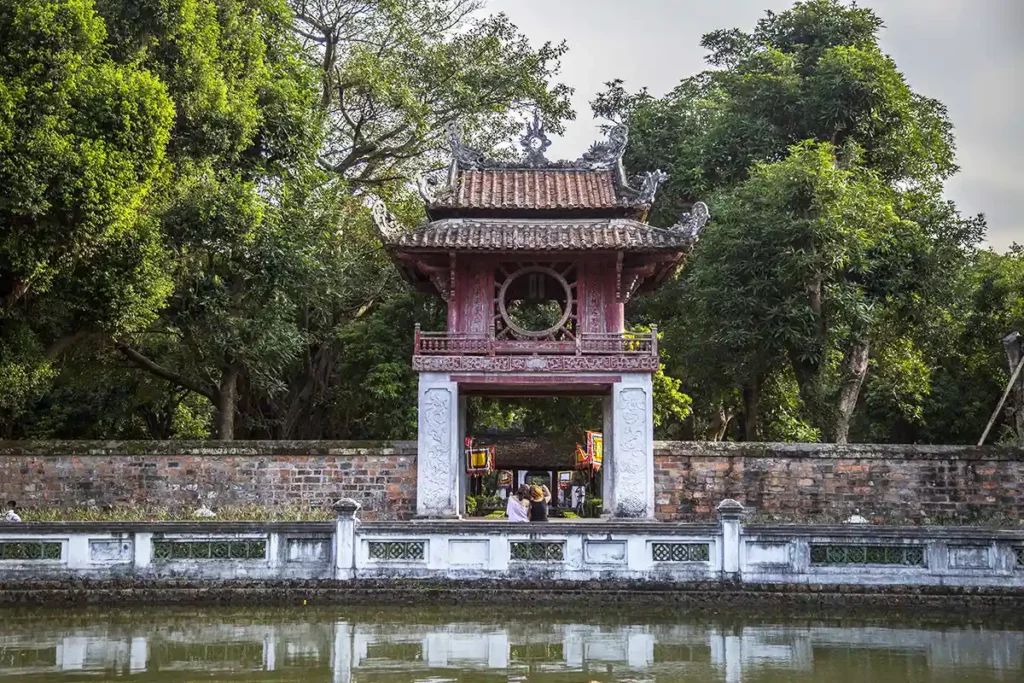
The gardens of the Temple of Literature, Hanoi. Photo credit: Mathieu Arnaudet / Parfum d’Automne
A few similarities
Pagodas and temples are built for different purposes. Pagodas are meant to create an environment conducive to spiritual awakening, while temples are built to protect the people and communities who visit them.
However, the two belief systems coexist and often overlap. Traditionally, Vietnamese people (even non-Buddhists) pray both in pagodas and in temples, seeking protection for themselves, their loved ones, and their community.
You will also notice that the decorations in pagodas and temples can look quite similar, despite the absence of Buddha statues in temples. Both often contain altars and numerous offerings left by visitors as a sign of gratitude. (In pagodas, however, meat is never used as an offering, while it is common to see chickens placed on temple altars!).The act of prayer using incense to connect with Buddha or the spirits is also similar: believers make three bows to begin the prayer and three more to signal their departure.
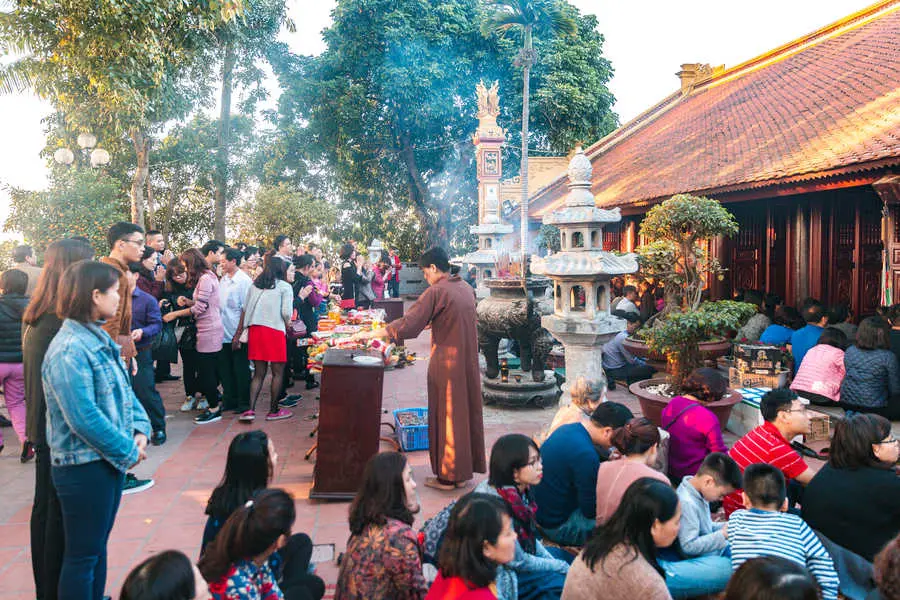
New year celebration at Tran Quoc pagoda Photo credit: Mathieu Arnaudet
Coexistence of pagodas and temples
You will often see pagodas and temples standing side by side in Vietnamese villages. While there may be several temples, there is usually only one pagoda per village.
In Duong Lam village, for example, you can visit two temples dedicated to Kings Phung Hung and Ngo Quyen, both of whom were born there. The villagers venerate these two historical figures equally.
Vietnamese people may visit both pagodas and temples on any day. Major ceremonies, however, are often held on the 1st and 15th days of each lunar month. There is no obligation to choose between one or the other.
Although Vietnamese society is rapidly modernizing, the transmission of cultural and spiritual values still plays a central role in children’s education.
A form of “spiritual tourism” has been developing in recent years, encouraging Vietnamese people to visit places of worship. Numerous festivals have also emerged across the country, reviving the nation’s spiritual heritage, which remains a core foundation of Vietnamese society.
Our agency is here to organize a private tour to discover Vietnam’s most beautiful historical and cultural monuments.

